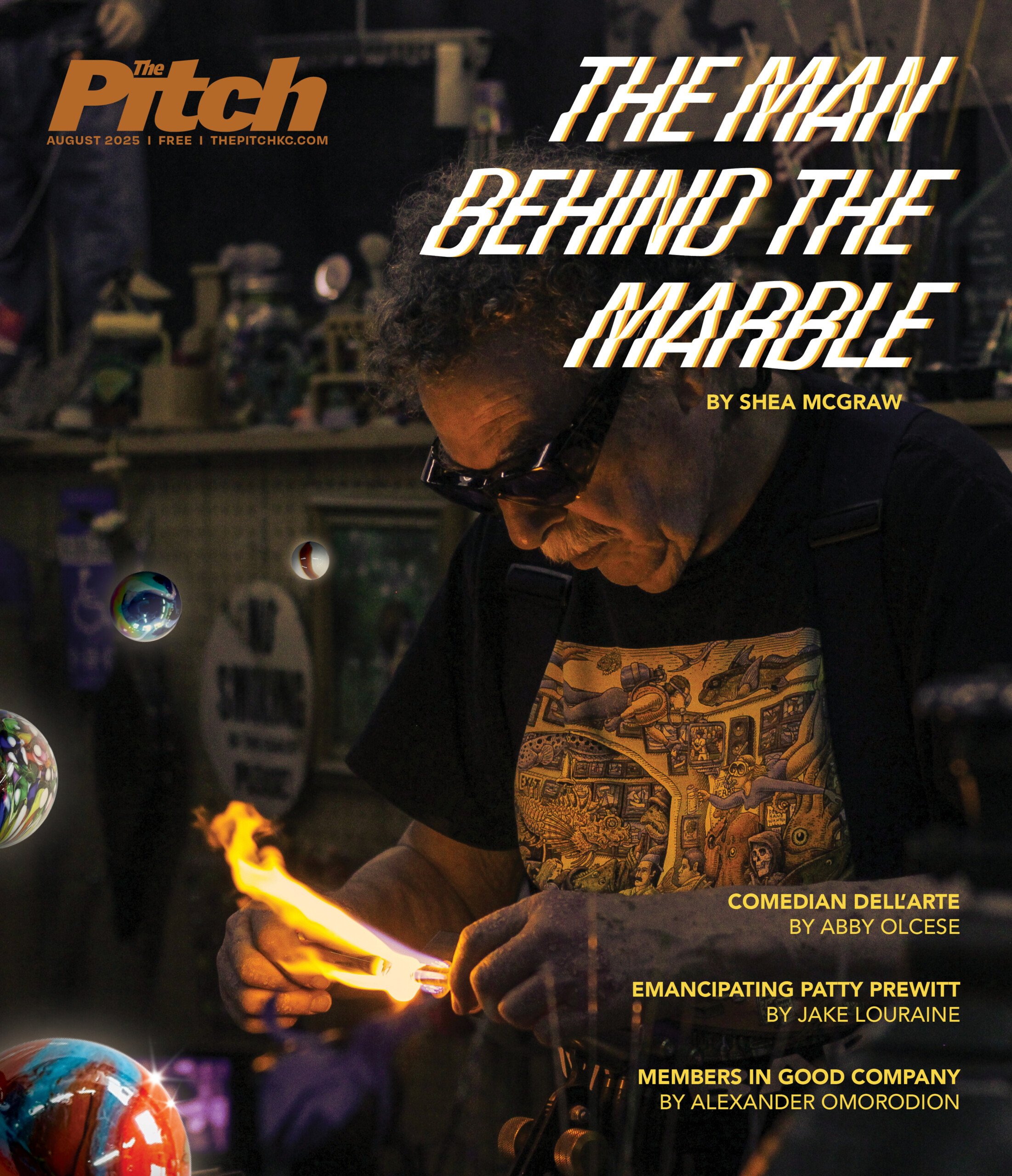Collection Bait
With warmer temperatures, a strange sight returns to the city: women raising money for a battered-women’s shelter the same way prostitutes hustle for tricks.
One afternoon this spring, I saw two women gesturing at cars near West Pennway and Southwest Boulevard. They held signs seeking donations to a shelter for battered women and children. Drivers who rolled down their windows and gave them some money got a small bag of Famous Amos cookies.
A week later, I saw two different women holding the same signs at the corner of Independence and Topping. I took a small yellow slip of paper from one of the women. “Drug problem?” it read. “Total recovery is possible!” The handbill listed phone numbers for men’s and women’s homes operated by the Kansas City Restoration Church.
I didn’t give the woman any money. I’m uncomfortable donating to a church associated with a recently incarcerated scammer of immigrants.
I became familiar with Restoration Church last summer. A small pile of its multicolored handbills accumulated on my desk while I was putting together a story about church groups that waded into traffic, trading candy for donations (“Don’t Feed the Preacher,” October 12, 2006).
The exploits of “Bishop” Carva White, a Cadillac-driving ex-con who sent children into the streets with buckets and Pixy Stix, dominated the story. I mentioned Restoration Church in a section about the dangers of raising money in traffic; last August, a car hit a Restoration Church solicitor at Winner Road and Interstate 435.
The police didn’t release the injured man’s name. In a brief interview at the time, Efrain Gonzalez, the pastor at Restoration Church, told me that the accident was a “minor thing.”
The church puzzled me, so I went to a service one Thursday night in a house of worship at 12th Street and Belmont. Before the service, Olegario Medina, the supervisor of the men’s home, and Tommy Brown, another church leader, told me how they’d been rescued from drugs and other destructive behavior. Gonzalez then preached in English and Spanish to a multiracial congregation of about 30.
Obviously, Restoration Church wasn’t some fly-by-night operation. Gonzalez, a former heroin addict, has been preaching in Kansas City since 1992. Now in his 40s, he stopped here on his way home to California after helping to plant a church in Chicago.
But all was not harps and angels.
A decade ago, Restoration Church made some residents of the Indian Mound neighborhood unhappy when it bought a print shop at Scarritt and Topping and converted it into a home for men. The building sits across the street from an elementary school. The city tried to deny the necessary zoning change, but the church prevailed in federal court. “Since then, we’ve just lived with it,” a neighborhood leader named Dennis Stack told me last summer.
I had my doubts about the church’s “program” as well. Medina and Brown said the ministry targeted addicts, gang members and prostitutes. The men and women who come into the shelters, they said, were expected to raise money five days a week — dangling cookie bags or making taco plates for delivery to various workplaces on Fridays.
“In a regular church, you don’t work like you do in this ministry,” Brown said.
I know that thing about idle hands, but this ministry seemed controlling, even for people whose lives had spun spectacularly out of control. Medina said the program lasts nine months to a year, an unusually long stay in treatment circles. “Some of us need to be in the homes,” Medina said.
Still, it’s hard to see many productive lives getting built from a year of street begging.
Also, battered-women’s shelters don’t typically hand their residents collection jars and deploy them to busy intersections. Hey, Mitch, I think I just saw your wife peddling M&Ms at an exit ramp.
Such methods aren’t popular among the professionals who assist homeless and addicted people. “Those organizations that stand on the corners and harass pedestrians and cars, I just think they do a disservice to the whole assistance network,” Jan Marcason, who was then the executive director of the Mid America Assistance Coalition, told me last summer. (Marcason left the organization at the end of last year and was recently elected to the Kansas City, Missouri, City Council.)
Restoration Church’s credibility took another hit earlier this year. In January, a former church officer pleaded guilty to five counts of felony stealing, earning a five-year prison sentence.
Joe Chavez had been accused of taking $237,000 from immigrants in a green-card scam. Operating out of an auto shop on St. John Avenue, Chavez charged $5,000 (give or take) for his dubious assistance in helping immigrants obtain permanent residency. (His advice, basically: lie.) Police had logged 57 complaints against him.
Chavez found many of his victims on Sunday mornings. “A lot of people said that’s how they came across Chavez, through their church ties,” says John Dollins, a Kansas City police detective.
In paperwork filed with the state three months before the first victims went to police, Chavez was listed as Restoration’s treasurer. Yet when I interviewed Gonzalez last Tuesday, the pastor insisted that Chavez had left the church a long time ago.
When I told Gonzalez that Dollins said Chavez targeted church members, he said, “The detective is lying, brother.”
As we spoke, Gonzalez and another man were painting a short wall around Gonzalez’ yard. The church bought the property in 2002, and it’s exempt from taxes. A chain-link fence extends all the way to the sidewalk, giving Gonzalez’ pit bulls the opportunity to leer at pedestrians from close range.
Gonzalez and his wife, Jina, do not live in opulence — the county says their home in the Northeast is worth $32,873. Just the same, street fund-raisers provide them with a livelihood. Gonzalez told me last summer that the church is his only job, a somewhat remarkable feat given the size of the congregation.
I asked Gonzalez to show me the shelter for women and children. He refused. A day later, property records led me to a house five blocks from Gonzalez’ parsonage. A woman who called herself the overseer said five women were staying in the house. They weren’t there, though; she said they were at the men’s home for a Wednesday-night “discipleship.”
The meeting at the men’s home broke up around 8:30. A resident let me in. Standing in the meeting room were four women, including the two I had seen at Independence and Topping. Tommy Brown was upstairs, where a handful of men mingled among bunk beds.
I didn’t see Pastor Gonzalez. Maybe he was busy feeding cookies to his dogs.




